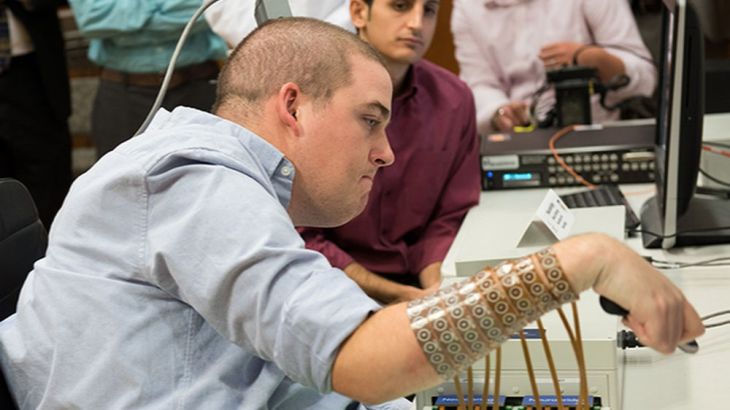Medical wonder: Microchip helps paralysed man move
Nerve-bypass technology helps 24-year-old man regain some use of his arms, five years after being left a quadriplegic.

A paralysed man has regained some use of his arms, through a new method known as nerve-bypass technology.
Scientists in the US first connected his brain to the technology in 2014, and after two years of practice and fine-tuning, they are seeing remarkable results.
Keep reading
list of 4 itemsFirst pig kidney in a human: Is this the future of transplants?
Why are some countries decriminalising drugs?
‘No good evidence’ for gender care for youth over long-term, review finds
A microchip was inserted into his brain so that scientists could learn which parts he uses when he wants to move his hands.
Ian Burkhart broke his neck five years ago after diving into the sea and getting pushed into a sandbar by the waves.
“Doctors told me I had broken my neck,” he said.
The 24-year-old Burkhart was left a quadriplegic who has movement in his neck and head but no feeling from his chest down; he cannot control his arms or legs.
“I had spinal injury at the C5 level so I would most likely be able to move shoulders around but nothing else,” he said.
READ MORE: Battling superbugs – cave bacteria could hold the answer
In 2014, Burkhart signed up to help researchers developing reanimation technology.
Now he is able to pick up certain objects like a bottle and can pour out of it.
Chad Bouton, division leader at The Feinstein Institute, said: “So now once the system is connected, we show different types of hand movement and we record the signals specifically from the brain that are associated with the movements and how to decypher them.”
The technology bypasses his nerves with a computer that is connected to a panel on his arm. It provides signals for the muscles that move his hand and fingers.
It is the first time a paralysed man has regained controlled use of his hand in such a way, and although it is only in a lab setting for now, Burkhart is able to use a credit-card swipe machine and play a guitar computer game on his own.
“If I can help get some independence back and help others get some back, it’s huge,” he says.